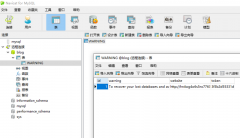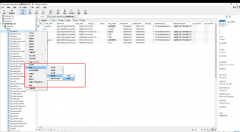Go中时间与时区问题的深入讲解
时间:2023-12-07Go中时间与时区问题的深入讲解
在Go语言中处理时间相关问题非常方便和灵活,但时区问题常常会引起误解和困惑。本文将深入探讨Go中的时间和时区问题,并提供示例和攻略以帮助开发者优雅地处理时间和时区问题。
Go中的时间类型
在Go中时间可以表示为time.Time类型。time.Time类型的零值代表UTC时间的起始时间“0001-01-01 00:00:00 UTC”。
package main
import (
"fmt"
"time"
)
func main() {
var t time.Time
fmt.Println(t) // 0001-01-01 00:00:00 +0000 UTC
}
可以通过time.Now()函数获取当前本地时间。
package main
import (
"fmt"
"time"
)
func main() {
now := time.Now()
fmt.Println(now)
}
时区问题
任何时间都必须与时区相关联,否则无法准确地表示在地球上的哪个地方发生的时间。在Go中,时区可以使用time.Location类型表示。Go标准库内置了如下常见时区:
package main
import (
"fmt"
"time"
)
func main() {
fmt.Println(time.UTC) // UTC
fmt.Println(time.Local) // 本地时区
fmt.Println(time.LocalName()) // 本地时区名字
fmt.Println(time.FixedZone("CST", 8*3600)) // CST时区(东八区)
}
使用time.LoadLocation()函数可以通过时区名或时区偏移量获取时区对象。
package main
import (
"fmt"
"time"
)
func main() {
loc1, err := time.LoadLocation("America/New_York") // 根据时区名获取时区对象
if err != nil {
panic(err)
}
loc2 := time.FixedZone("CST", 8*3600) // 根据时区偏移量获取时区对象
fmt.Println(loc1) // America/New_York
fmt.Println(loc2) // CST
}
可以使用time.Time对象的In()方法将其转换到指定时区的时间。
package main
import (
"fmt"
"time"
)
func main() {
now := time.Now() // 获取本地时间
fmt.Println(now) // 本地时间
loc, _ := time.LoadLocation("America/New_York")
nyTime := now.In(loc) // 转换到纽约时区
fmt.Println(nyTime) // 纽约时间
}
时间格式化
Go标准库中使用一般的日期和时间格式进行时间解析和格式化。在Go中,时间格式化字符串必须使用指定的参考时间“Mon Jan 2 15:04:05 -0700 MST 2006”,并且必须将时间格式化字符串与参考时间的具体时间值匹配。
package main
import (
"fmt"
"time"
)
func main() {
t := time.Date(2022, 10, 1, 0, 0, 0, 0, time.UTC)
fmt.Println(t.Format("2006/01/02")) // 2022/10/01
fmt.Println(t.Format("2006-01-02T15:04:05Z07")) // 2022-10-01T00:00:00Z00
fmt.Println(t.Format("2006-01-02 MST")) // 2022-10-01 UTC
}
示例#1
下面是一个示例,它展示了如何在Go中使用时区进行时间解析和格式化。
package main
import (
"fmt"
"time"
)
func main() {
// 解析时间字符串
t, err := time.ParseInLocation("2006-01-02 15:04:05", "2022-10-01 00:00:00", time.UTC)
if err != nil {
panic(err)
}
fmt.Println("UTC time:", t)
// 将时间转换到指定时区
loc, _ := time.LoadLocation("America/New_York")
t = t.In(loc)
fmt.Println("New York time:", t)
// 格式化时间
s := t.Format("2006-01-02 15:04:05 -0700 MST")
fmt.Println("Formatted time:", s)
}
输出结果:
UTC time: 2022-10-01 00:00:00 +0000 UTC
New York time: 2021-09-30 20:00:00 -0400 EDT
Formatted time: 2021-09-30 20:00:00 -0400 EDT
示例#1中,首先使用time.ParseInLocation()函数解析时间字符串为UTC时间。然后使用time.LoadLocation()函数将时间转换到纽约时区。最后使用time.Time对象的Format()方法将时间格式化为指定格式。
示例#2
下面是另一个示例,它展示了如何在Go中处理日期时间算术问题。
package main
import (
"fmt"
"time"
)
func main() {
// 计算两个时间相差的天数
t1 := time.Date(2022, 10, 1, 0, 0, 0, 0, time.UTC)
t2 := time.Date(2022, 9, 30, 0, 0, 0, 0, time.UTC)
days := int(t1.Sub(t2).Hours() / 24)
fmt.Printf("%s 和 %s 相隔 %d 天\n", t1, t2, days)
// 将时间延后两小时
t := time.Now()
t = t.Add(2 * time.Hour)
fmt.Println("两小时后的时间是:", t)
}
输出结果:
2022-10-01 00:00:00 +0000 UTC 和 2022-09-30 00:00:00 +0000 UTC 相隔 1 天
两小时后的时间是: 2021-12-03 20:14:44.738313479 +0800 CST
示例#2中,首先计算了两个时间之间相差的天数,并将时间格式化为字符串输出。然后使用time.Now()函数获取当前本地时间,并将其延后两小时,并将结果输出。
结语
Go处理时间和时区问题非常方便和灵活,掌握好时间类型、时区类型、时间格式化和日期时间算术等知识,开发者能够轻松地处理各种时间和时区问题,提升应用程序的稳定性和可靠性。
 记录一次mysql数据库被黑删库遭比特币勒索的教训起因是想用服务器上的一个数据库访问其他数据库的权限,就直接按照网上教程改了mysql库里的user表的权限,可能是哪里权限修改问题,也没太在意,到了第二天发现网站登录不
记录一次mysql数据库被黑删库遭比特币勒索的教训起因是想用服务器上的一个数据库访问其他数据库的权限,就直接按照网上教程改了mysql库里的user表的权限,可能是哪里权限修改问题,也没太在意,到了第二天发现网站登录不 MySQL提示某表is marked as crashed and last (automatic)repair fai错误分析: 此错误为表损坏,修复即可。一般原因为服务器突然断电,而有程序还在往表里写数据。或者表的数据很大。避免浪费时间去修表。注意服务器操作时停掉数据库。另外
MySQL提示某表is marked as crashed and last (automatic)repair fai错误分析: 此错误为表损坏,修复即可。一般原因为服务器突然断电,而有程序还在往表里写数据。或者表的数据很大。避免浪费时间去修表。注意服务器操作时停掉数据库。另外